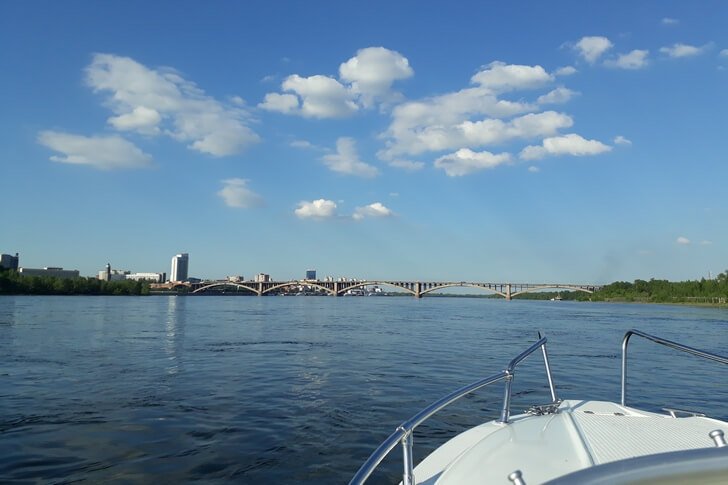Krasnoyarsk is so distant, cold and grandiose, a real Siberian giant that grew up in the middle of the impenetrable taiga. This city is full of some kind of elusive charm - looking at its bridges and pipes of industrial enterprises, you can catch the invincible force that moved the pioneers and explorers of the harsh Siberian lands forward, against all odds.
The city was given life by the great Yenisei. The river fed it and gave a powerful impetus to development. Today, like thousands of years ago, this water giant slowly directs its flows to the Kara Sea. You need to feel Krasnoyarsk after spending at least a few days here: take a walk around the center, go to the Stolby nature reserve, go to the hydroelectric power station and capture the bewitching landscapes that open up from the city bridges.
What to see and where to go in Krasnoyarsk?
The most interesting and beautiful places for walking. Photos and a short description.
- Reserve Stolby
- Chapel of Paraskeva Pyatnitsa
- Roev Brook
- Tatyshev Island
- Funpark Beaver Log
- King-fish
- Monument White Horse
- Monument to the artist Andrei Pozdeev
- Krasnoyarsk Museum of Local Lore
- Art Museum named after V. I. Surikov
- Museum-estate of V. I. Surikov
- Literary Museum named after V.P. Astafiev
- Steamboat-Museum Saint Nicholas
- Museum Victory Memorial
- Museum Center Ploshchad Mira
- Drama Theater named after A. S. Pushkin
- Opera and Ballet Theatre
- Church of the Transfiguration
- Holy Intercession Cathedral
- Krasnoyarsk Big Ben
- Krasnoyarsk-Passenger
- Communal bridge
- Vinogradovsky bridge
- Black Sopka
- Yenisei river
Reserve "Stolby"
A natural area on the northwestern spurs of the Eastern Sayan Mountains, bounded by the right tributaries of the Yenisei River. It starts in the city. There are unique rock formations here - syenite remnants, which are called "pillars". They are a bizarrely shaped rock in the form of a heap of huge boulders. The flora of the reserve is dense Siberian taiga. Stolby has a large tourist area with hiking and sports trails.
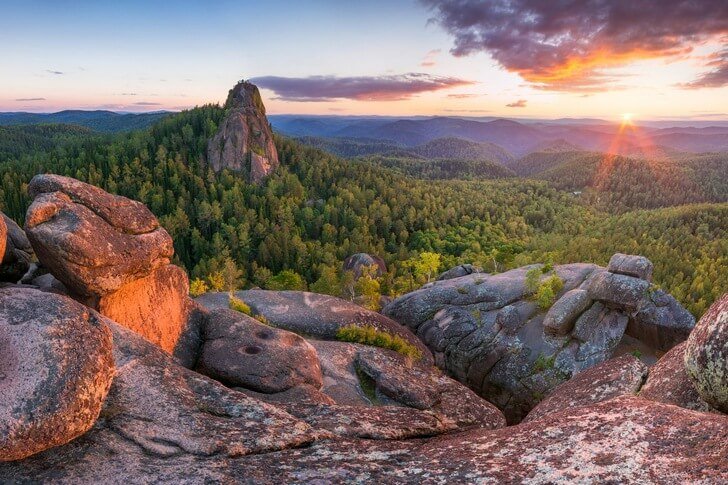
Chapel of Paraskeva Pyatnitsa
An Orthodox church, one of the symbols of Krasnoyarsk, erected in the middle of the 19th century on Karaulnaya Hill, where a Khakassian pagan temple was previously located. The first chapel on this site was built of wood and at the same time served as a guard tower, from which it was convenient to observe the approach of the enemy. The stone structure was erected at the expense of the gold miner P. I. Kuznetsov.

"Roev Brook"
One of the largest Russian zoos, covering an area of 31 hectares. Its collection is second only to the Moscow Zoo in diversity. The institution was organized on the basis of a "living corner" that had existed since 1947. Its first inhabitants were animals that suffered from poaching, mistreatment and negligence of tourists: lynxes, wolves, bears, swans, foxes, birds of prey.

Tatyshev Island
The island is located on the Yenisei within Krasnoyarsk. It connects to the city via two bridges. Today it is used as a recreational area - in the warm season it is visited by several tens of thousands of people every week. In summer you can ride a bike, roller skates or a tricycle, in winter - on a skating rink or skis. It even has its own beach, picnic area and arboretum.
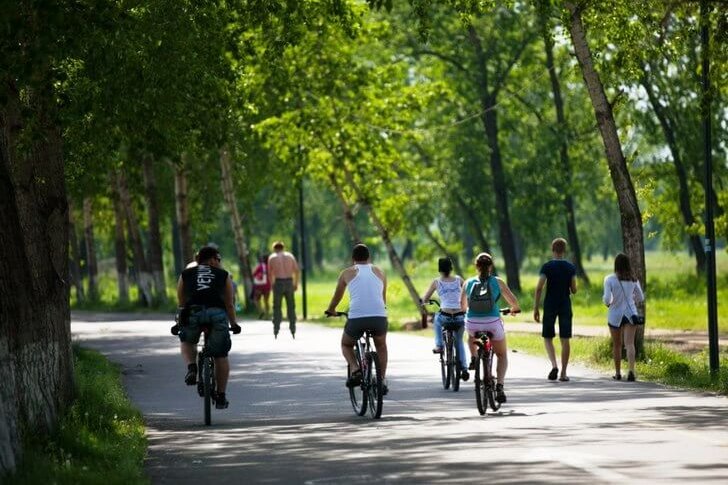
Funpark "Beaver Log"
Beaver Log is a multipurpose amusement park located next to the Stolby nature reserve. The complex is open all year round: in winter, ski slopes open here (by the way, the skiing season can last up to 6 months, sometimes the snow melts only in May), in warm weather, tourists are offered to ride extreme attractions, ride horses, swim in the pool or ride mountain biking on special downhill tracks.
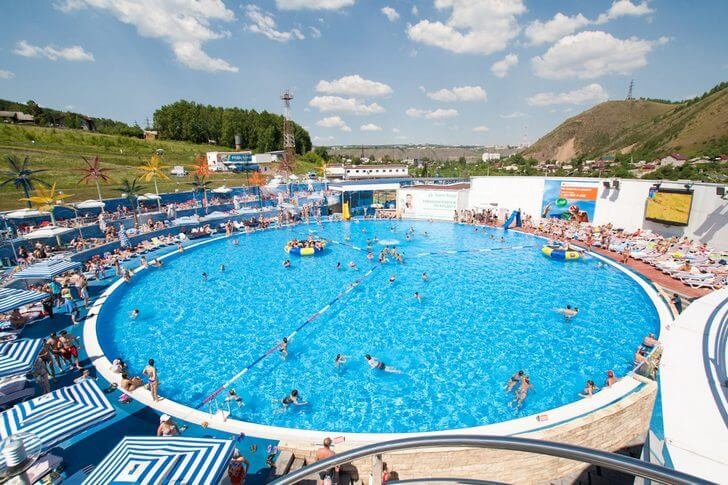
"King-fish"
The monument is a forged metal figure of the Yenisei sturgeon 4 meters long and weighing about 300 kg. The sculpture was installed in 2004 on an observation deck located on the Sliznevsky cliff. A breathtaking view of the mighty Yenisei opens from the hill. "Tsar-fish" is a character of the work of the same name by V.P. Astafiev, dedicated to the fight against the inexorable elements.
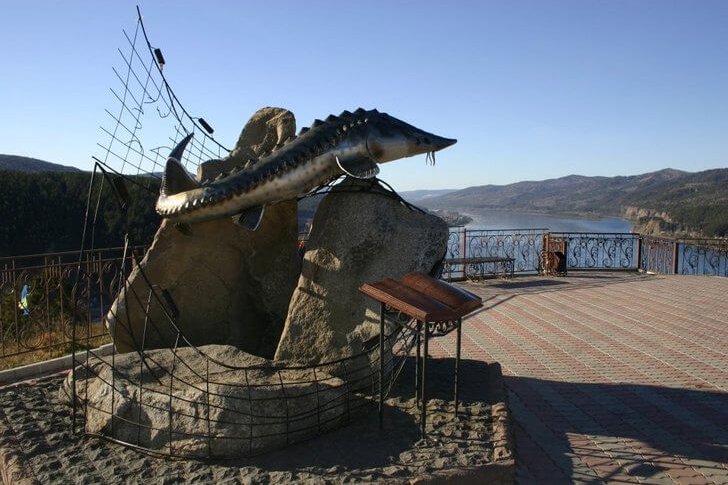
Monument "White Horse"
Sculptural composition dedicated to the pioneers and conquerors of Siberia. The main figure is an iron horse weighing over 430 kg. The animal stands on granite boulders. Nearby are a small fountain and a commemorative plaque. It is believed that the first Cossacks landed at the place where the sculpture was installed. After the detachment went ashore, the leader decided that this was where the city would be.

Monument to the artist Andrei Pozdeev
A. G. Pozdeev is a Soviet and Russian artist, a native of the Krasnoyarsk Territory. In 2000 (two years after the death of the master), grateful descendants decided to erect a monument in his honor in the central part of the city. A figure with an umbrella in his hand and an easel over his shoulder decorated Mira Avenue on the birthday of the maestro. The creators managed to convey the character of A. G. Pozdeev - good-natured, soft and enthusiastic.
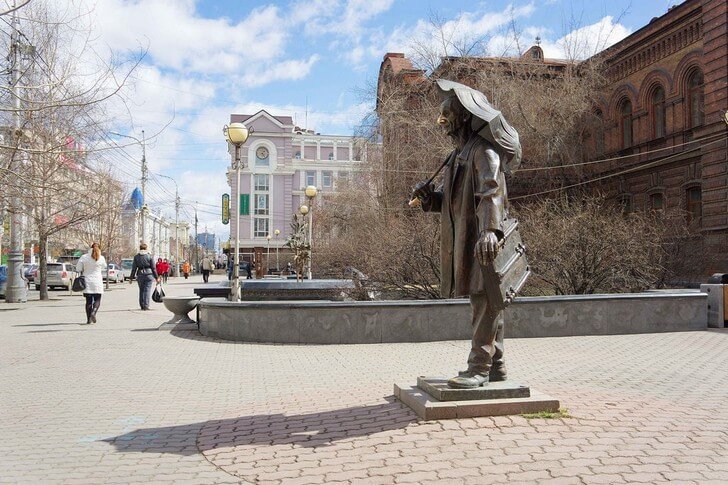
Krasnoyarsk Museum of Local Lore
The Museum of Local Lore is not only an exhibition dedicated to the history of the region, but also a full-fledged cultural and educational center, the largest in Siberia and one of the most influential in Russia. The exposition was founded in 1889 on the initiative of the local intelligentsia. The modern building of the museum is an Art Nouveau building, vaguely reminiscent of an Egyptian temple. To date, the funds store about 500 thousand exhibits.

Art Museum named after V. I. Surikov
The famous artist V. I. Surikov was born in Krasnoyarsk. Not surprisingly, there is an art gallery named after him here. The museum opened in 1957. The collection was based on works from private collections, as well as exhibits obtained from the funds of the State Russian Museum. Currently, the exposition is located in 3 historical buildings of the 19th - early 20th centuries.

Museum-estate of V. I. Surikov
The museum is located on the territory of the house where V. I. Surikov lived. This is a wooden manor of the 1830s, built of larch - a typical example of urban development of the 19th century. The museum was organized in 1948, in 1970 the mansion was restored. The collection contains more than 90 works by Surikov himself, handed down by his descendants, as well as interior items and things that belonged to the artist's family.
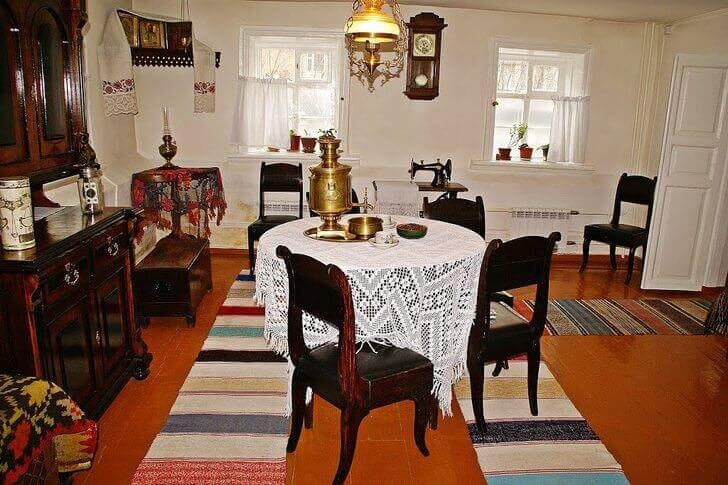
Literary Museum named after V.P. Astafiev
The museum collection is housed in a picturesque 19th-century mansion built of wood in the Art Nouveau style. In his appearance, you can also see the Gothic features. Previously, the building belonged to the representative of the merchant class F. Zuckerman. At one time, this house was considered one of the most beautiful in all of Krasnoyarsk. The exposition was created on the initiative of V.P. Astafiev in 1997.
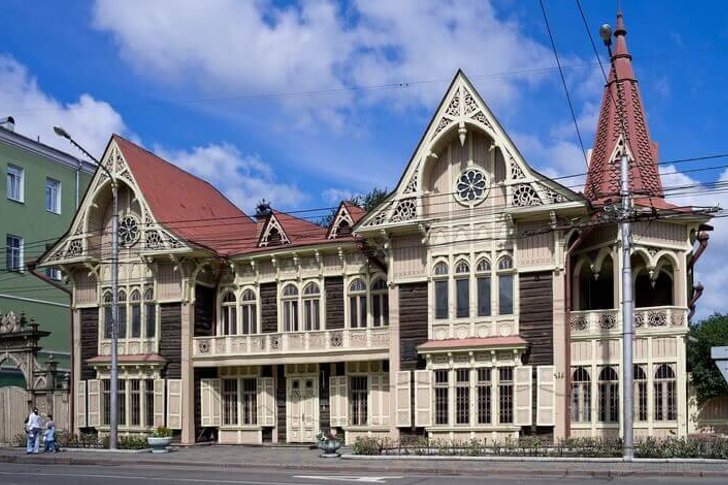
Steamboat-Museum Saint Nicholas
The steamer is moored to the bank of the Yenisei in the area of Strelka. It is a branch of the Krasnoyarsk Museum of Local Lore. The ship was built in 1886 at a shipyard in Tyumen and transported in parts to Krasnoyarsk. In 1891, the future Emperor Nicholas II rode it. The ship was decommissioned in the 1950s. The museum exposition started working in the 1970s after the overhaul of the ship.
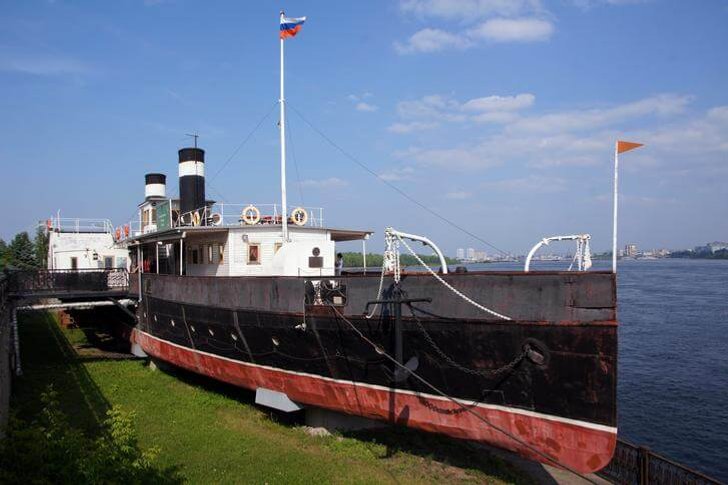
Museum "Victory Memorial"
The memorial complex is dedicated to the residents of the city and the region who died on the fronts of the Great Patriotic War. It was installed on the 30th anniversary of the Victory in 1975 on Pokrovskaya Gora. The complex includes a square with 22 tombstones, a monument to the warrior-liberator and a monument to the Union of Front and Rear, the Eternal Flame and the building of the museum itself. The exposition is dedicated to the events of the Second World War.
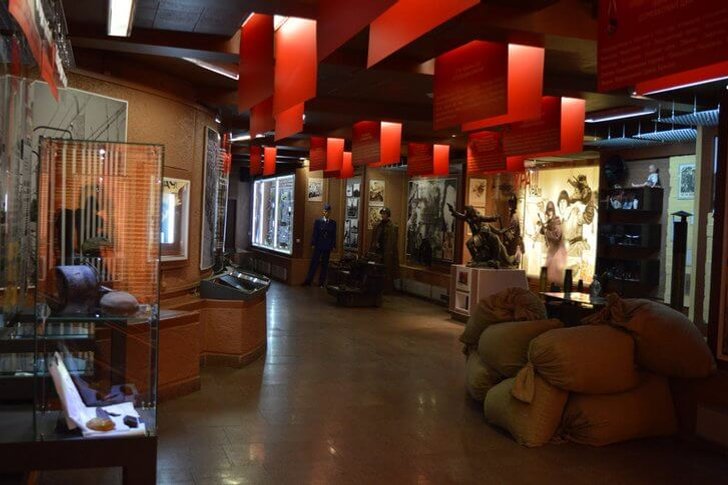
Museum Center "Ploshchad Mira"
The largest exhibition space in Siberia, where many exhibitions and cultural events take place. The center was established in 1987. In 1991, he completely changed the concept and refocused on the implementation of modern projects and the creation of a creative space for emerging authors. The result was not long in coming - the figure of 400 thousand visitors a year speaks for itself.

Drama Theater named after A. S. Pushkin
The first wooden building of the theater stage was erected in 1873 with the money of the merchant I. O. Krause. But it suffered a very trivial fate - after 25 years it burned to the ground. The next building was literally built by the whole world, as the funds were donated by representatives of all segments of the population of Krasnoyarsk, even penniless students. This building of the beginning of the 20th century with elements of the classical style has survived to this day.

Opera and Ballet Theatre
The Krasnoyarsk musical scene is located in a building of Soviet architecture. It is characterized by laconic forms, even some rudeness and clumsiness of the design. In front of him was a wide Theater Square with a magnificent color-music fountain consisting of three bowls and a powerful lighting system that allows organizing real performances to the sounds of classical music.

Church of the Transfiguration
The Catholic Church of the beginning of the 20th century, built of red brick with elements of the Gothic style, designed by S. V. Aleksandrovich. Previously, a wooden temple was located in its place. Since 1982, the organ hall of the local Philharmonic has been located inside. Since 1993, Catholic services have been held here, and the nearest plans include the transfer of the building to the Catholic community and the search for a new place for concerts.
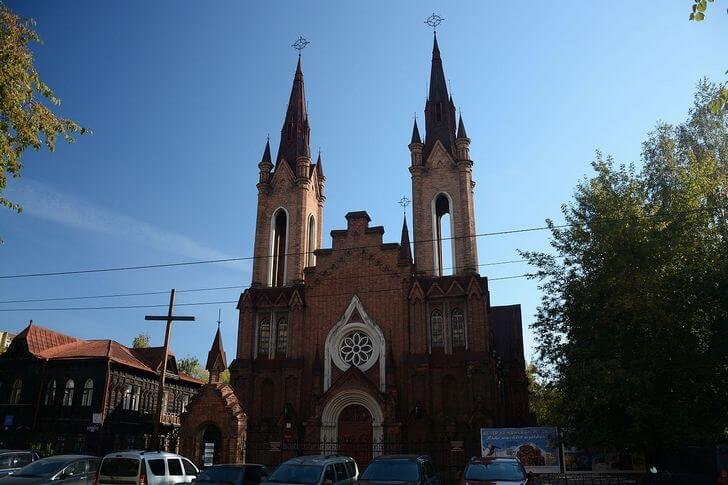
Holy Intercession Cathedral
A valuable architectural monument of the 18th century, a vivid example of the Siberian baroque style (Yenisei school). The building fascinates with its beauty and elegant exterior decoration. Although, according to some connoisseurs, before the restoration of the 2000s, it looked much more expressive, being painted red, although this did not correspond to the historical appearance of the building. Today, the original appearance of the temple is completely restored.
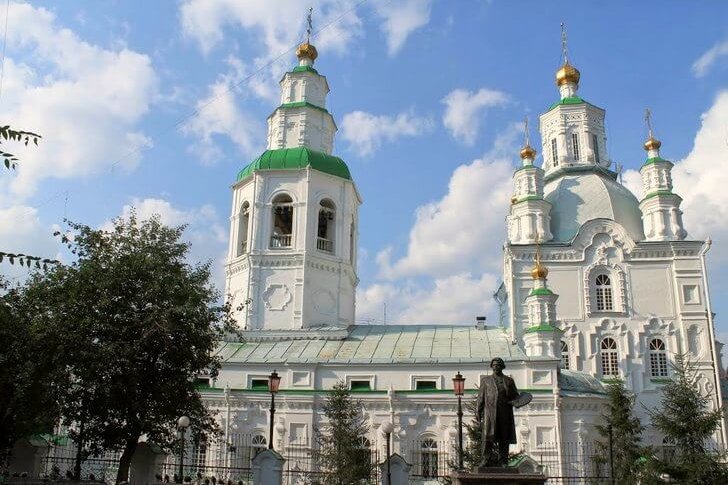
"Krasnoyarsk Big Ben"
The clock tower, reminiscent of the famous London Big Ben, for which it received such a nickname. On four sides, large dials with a diameter of 6.5 meters are fixed on the facades of the structure. Interestingly, the construction of the tower began in the 1970s, but was stopped due to funding cuts. The construction was completed only in 2001.
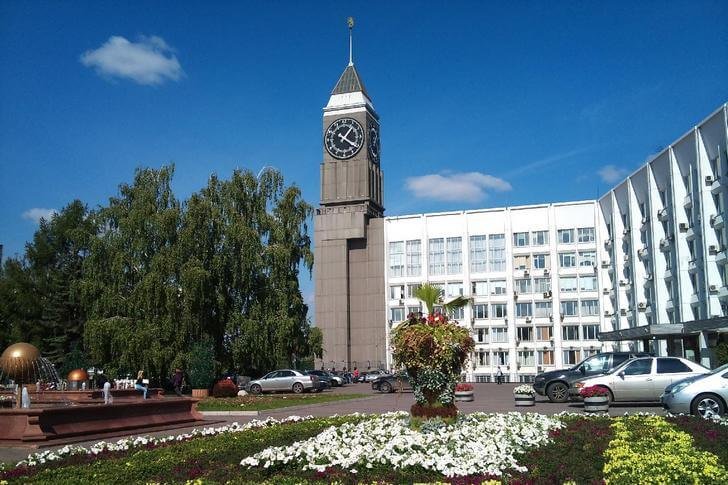
Krasnoyarsk-Passenger
The main railway station, housed in a reconstructed building from the 1960s. Like all Soviet buildings of this purpose, the building looks pompous and monumental. Near the station there is Station Square, on which there are three fountains and a 16-meter stela topped with a figure of a lion. The architectural composition of the place is successfully complemented by benches and forged lanterns.

Communal bridge
An automobile and pedestrian bridge spanning the Yenisei and connecting the Sverdlovsk and Central regions. The structure is 2.3 km long and 23 meters wide. It was launched in 1961. The architectural style can be defined as the late Stalinist Empire style. After the completion of the construction, the bridge became an adornment of the urban landscape, and even now the structure cannot be called obsolete - it fits so harmoniously into the landscape.
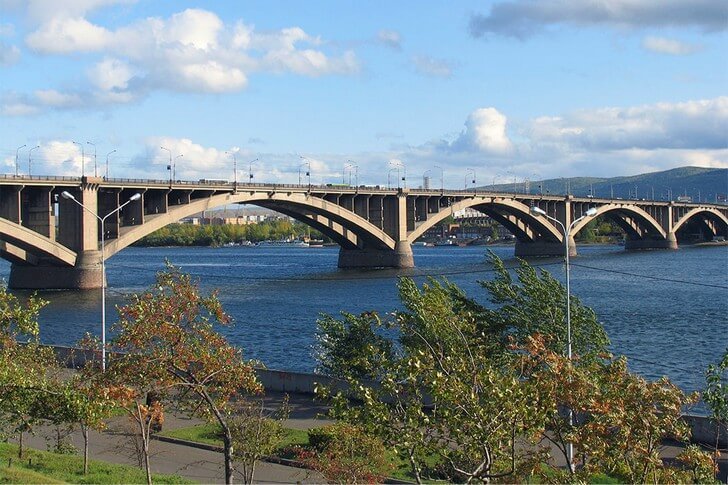
Vinogradovsky bridge
The bridge across the Yenisei, through which you can get to Tatyshev Island. This pontoon was also built in Soviet times - in the 1970s and 80s. The building is 550 meters long and 10 meters wide. According to the type of construction, it belongs to cable-stayed bridges. The passage is not intended for cars, although its dimensions allow even trucks to pass. The object is included in the UNESCO catalog "Bridge building of the world" along with other bridges of Krasnoyarsk.

Black Sopka
A small mountain (rather - a hill), reaching 688 meters in height. It is located close enough to Krasnoyarsk, so it is well visible from many parts of the city. Black Sopka is considered an active volcano, although few people believe in possible eruptions. The slopes of the mountain in some places are covered with taiga, while in others they are covered with a continuous carpet of stones with sharp corners, similar to broken granite slabs.
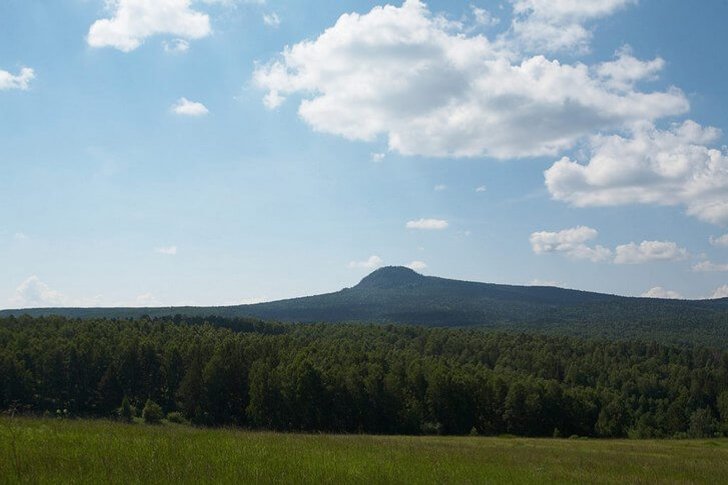
Yenisei river
The Great Siberian river, one of the deepest and longest in the world. It flows through the territory of Khakassia, Tyva and the Krasnoyarsk Territory, flowing into the Kara Sea. Krasnoyarsk lies on both banks of this water giant. Somewhere the river is dressed in well-groomed promenades, in other places it is surrounded by an industrial zone, powerful bridges are thrown across the water column, which create a unique image of a Siberian city.
